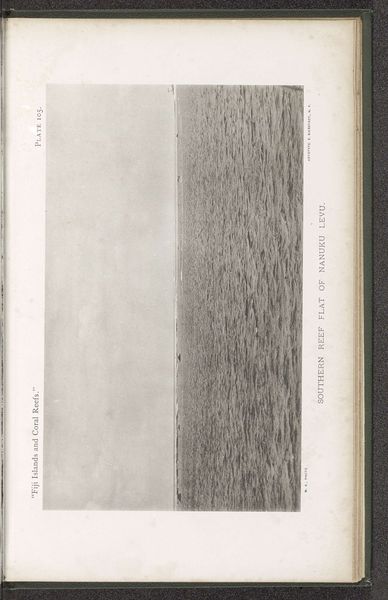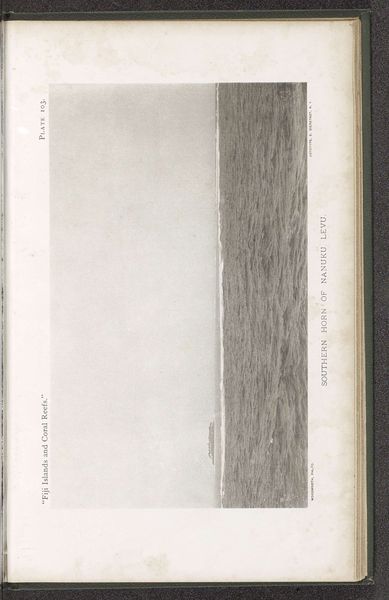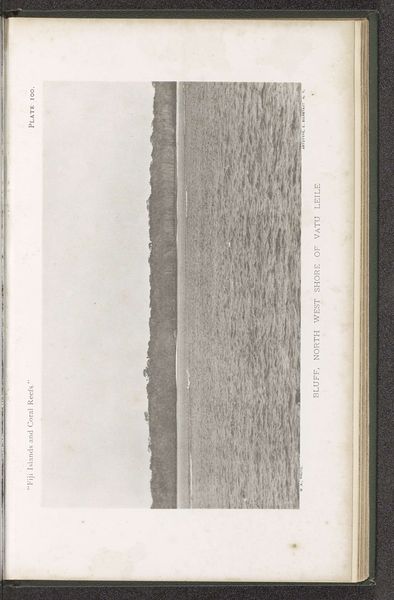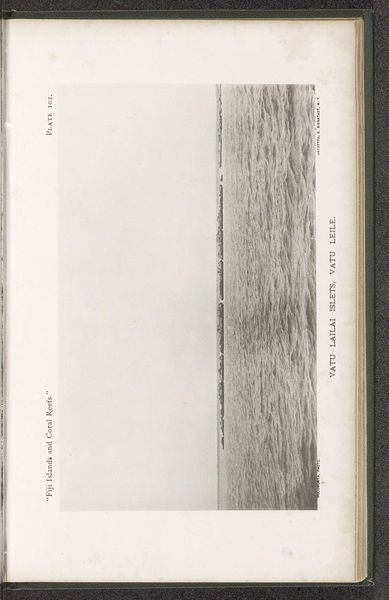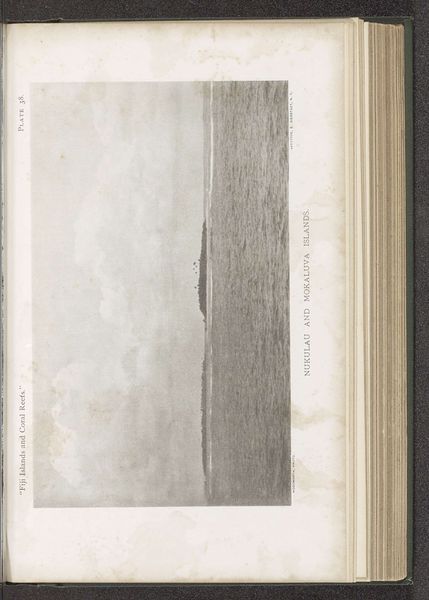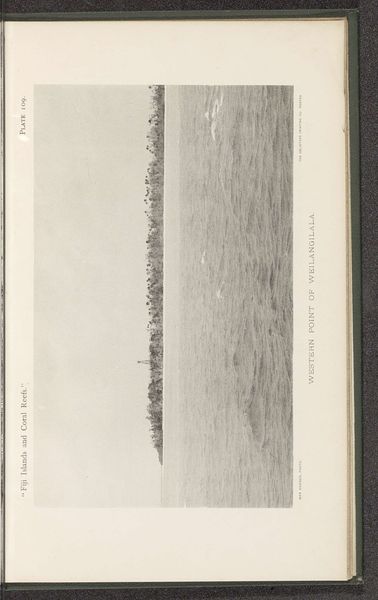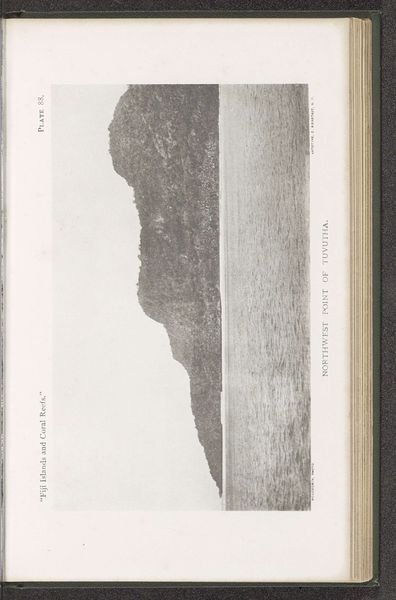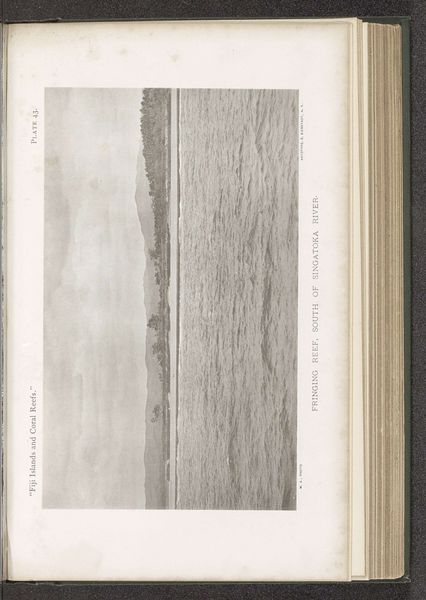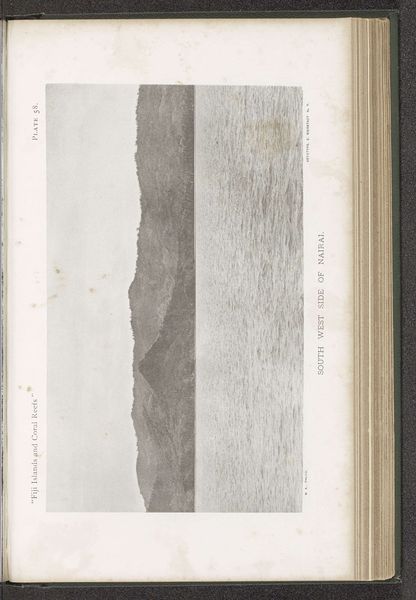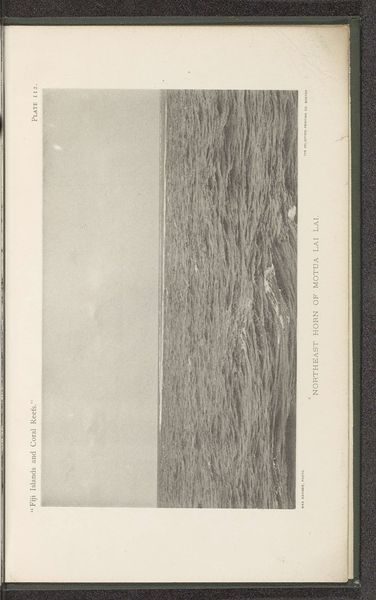
print, photography
#
pictorialism
# print
#
landscape
#
photography
#
ocean
#
realism
Dimensions: height 108 mm, width 179 mm
Copyright: Rijks Museum: Open Domain
Curator: We're looking at "Gezicht op de oceaan bij Fiji" by W. McM. Woodworth, a print dating to before 1899. It's an incredible seascape, predominantly rendered in muted tones. Editor: Immediately striking—the stark horizontal division between sky and water creates a kind of meditative stillness, yet the detailed surface of the water has movement and implied energy. The tones seem almost...bleached. Curator: Yes, and I think the medium itself is key here. As a photographic print, we need to consider the specific process used at the time. Pictorialism, a movement the image engages with, aimed to elevate photography to the status of fine art, often using soft focus and hand manipulation techniques. These would affect tone and texture. The material making, rather than purely the "subject" comes to the forefront. Editor: Exactly. And understanding pictorialism situates this image within the complex dynamics of colonialism and representation. Fiji, as a British colony, was subjected to various forms of exploitation, including visual appropriation. Whose gaze is being centered here? Does the image challenge, or reinforce power imbalances through this aestheticization of the landscape? Who was this photograph intended for? Curator: I agree. Considering its initial context and intended audience is crucial. How was this print distributed? To whom? The production process and intended usage deeply impacted its meaning and power. As something to be printed, displayed, traded... How does circulation play into our understanding? Editor: The absence of people is striking, which suggests it’s a landscape made solely for a European audience, excluding the native people in this portrayal of place. A representation made from the colonizers perspective of a place both exotic and “empty” for claiming and development. How can a contemporary viewer look past the simple, placid representation and address issues related to political agenda, identity and the historical circumstances inherent in this type of image. Curator: Absolutely. It underscores how materials, means of production, distribution and audience shape our engagement with seemingly simple landscapes, urging us to question whose stories are being amplified, and whose are obscured in art. Editor: And highlights the necessity of looking at art not just for its aesthetic qualities, but for what it reveals about societal power dynamics. Even in an image as apparently "peaceful" as this one, colonial influence quietly resonates.
Comments
No comments
Be the first to comment and join the conversation on the ultimate creative platform.
